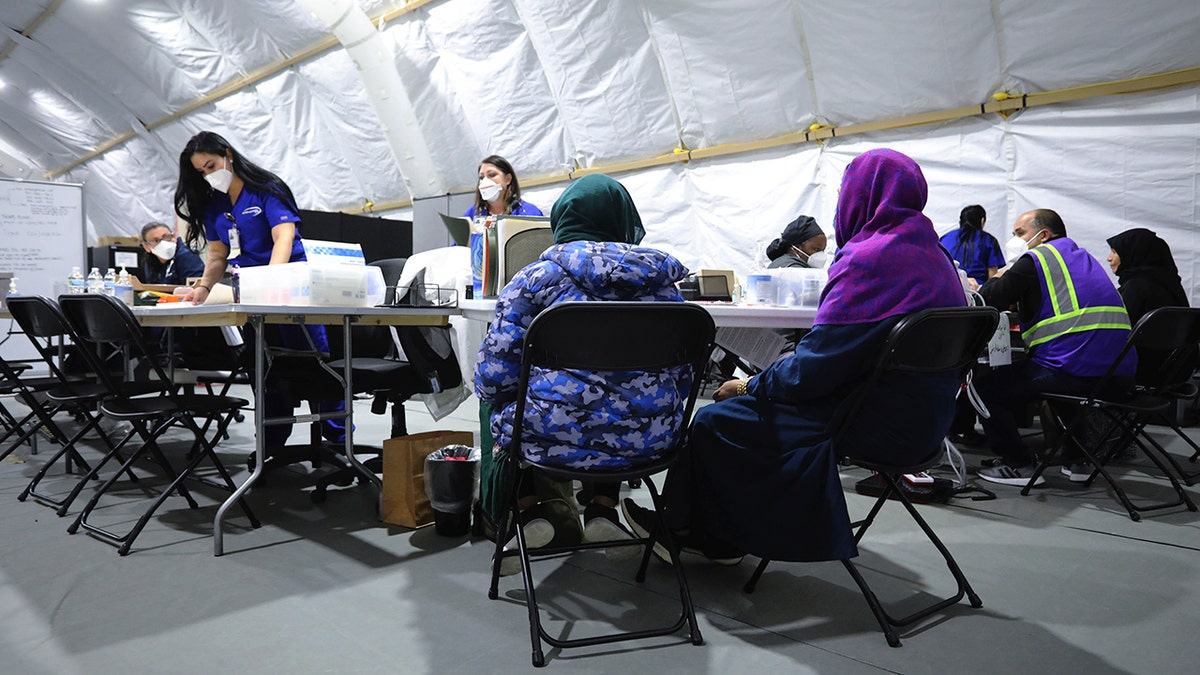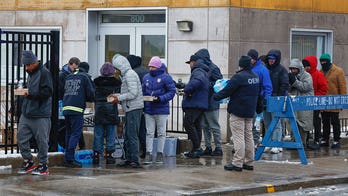Lt. Col. Scott Mann reflects on stranded Afghan commandos, Task Force Pineapple one year later
Afghan special operators have been high-priority targets of the Taliban since U.S. military forces withdrew from Afghanistan last year, former Green Beret says.
EXCLUSIVE: The U.S. government "struggled to track" Afghan evacuees who independently departed U.S. military bases designated as "safe havens" after the U.S. withdrawal from Afghanistan, and did not attempt to locate those individuals to verify their compliance with parole conditions, the Department of Homeland Security inspector general found.
DHS led the interagency effort to support and resettle Afghan evacuees, and established the Unified Coordination Group (USG) to coordinate efforts to provide Afghan evacuees with temporary housing, vaccinations, a tuberculosis screening and immigration processing.
The UCG oversaw operations at eight safe havens, managed by DHS officials, along with representatives from the Department of Defense, Department of State and Department of Health and Human Services.
DHS OIG FAULTS AFGHAN EVACUEE VETTING, WARNS NATIONAL SECURITY THREATS MAY HAVE ENTERED US
Under this program, all Afghan evacuees had U.S. citizenship, long-term immigration status, or received parole and "could depart ports of entry or safe havens and could choose to relocate without assistance from a resettlement agency."
DHS Inspector General Joseph Cuffari has been reviewing DHS’ efforts to track Afghan evacuees who independently departed safe havens and how independent departures affected evacuees’ immigration status.
Cuffari found that the UCG "struggled to track Afghan evacuees who independently departed U.S. military bases designated as ‘safe havens.’"

DHS Inspector General Joseph Cuffari has been reviewing DHS’ efforts to track Afghan evacuees who independently departed safe havens and how independent departures affected evacuees’ immigration status. (Photo by Lukas Schulze/Getty Images)
"Specifically, UCG officials had difficulties documenting when independent departures occurred," the inspector general found, noting that the case tracking system "was not designed to track independent departures."
"In some instances, officials noticed that Afghan evacuees recorded as present at safe havens had already left," the inspector general found.
Some Afghan evacuees also departed the safe havens "without completing medical requirements." Overall it found that 11,700 departed without resettlement assistance – known as "independent departures."
The inspector general also found that the UCG’s independent departure task force "did not attempt to locate all Afghan evacuees who independently departed safe havens to verify their compliance with parole conditions."
"These evacuees could face challenges obtaining long-term immigration status due to their failure to comply with parole conditions or to submit immigration applications," the inspector general found.
DHS, in its response to the inspector general, said the agency concurs with the recommendations, and remain "committed to working with immigration, resettlement, intelligence, law enforcement and counterterrorism professionals across multiple Federal departments and agencies, as appropriate, to complete this mission."
DHS said that using lessons learned, officials are working with the interagency to "clarify and institutionalize UCG policies, processes, and capabilities and will work to implement these improvements as appropriate by the end of FY 2023."

Evacuees from Afghanistan are seen at their temporary shelter inside the US Army Rhine Ordonanz Barracks in Kaiserslautern, Germany, August 30, 2021. REUTERS/Kai Pfaffenbach
"The UCG developed processes to record when independent departures occurred, locate Afghan evacuees after their independent departures, and verify their parole compliance," the report continues. "However, the UCG officials at safe havens had difficulties tracking when Afghan evacuees independently departed safe havens, and the Task Force did not attempt to locate all Afghan evacuees who independently departed safe havens to verify their parole compliance."
Meanwhile, the inspector general, last month, found that DHS failed to properly vet and screen Afghan evacuees coming into the U.S. and may have allowed multiple national security and public safety threats into the U.S.
That report found that Customs and Border Protection "did not always have critical data to properly screen, vet, or inspect the evacuees."
AFGHAN EVACUEE CHARGED WITH CHILD SEX CRIME IN NEW MEXICO: OFFICIALS
"We determined some information used to vet evacuees through U.S. Government databases, such as name, date of birth, identification number, and travel document data, was inaccurate, incomplete, or missing. We also determined CBP admitted or paroled evacuees who were not fully vetted into the United States," the report says.
"As a result, DHS may have admitted or paroled individuals into the United States who pose a risk to national security and the safety of local communities," the report continued.
Tens of thousands of Afghans were evacuated to the U.S. in the wake of the withdrawal and subsequent Taliban takeover of the country in August last year. More than 76,000 Afghans have so far been evacuated and processed into the U.S.

Afghan refugee women register to be seen by a doctor inside the medical tent at Liberty Village on Joint Base McGuire-Dix- Lakehurst, N.J., on Dec, 2, 2021. (Barbara Davidson/Pool via AP)
That report outlines a process in which the Pentagon evacuated foreign nationals to "lily pads" — countries such as Germany, Qatar, Spain and Italy, where the Afghans could be temporarily housed before being transferred to the U.S.
Under Operation Allies Welcome (OAW), DHS used humanitarian parole — supposed to be used on a case-by-case basis for reasons of significant public benefit or urgent humanitarian reasons — to quickly process tens of thousands of Afghans into the U.S. By doing so, the administration avoided the special immigrant visa (SIV) process and U.S. refugee admissions process, both of which can take years to complete.
CLICK HERE TO GET THE FOX NEWS APP
The Biden administration has repeatedly touted a multilayered process to screen, inspect and vet evacuees using biometric and biographical data against multiple databases, including Pentagon, DHS and FBI repositories. However, the audit faulted the process and said that "critical data" was not always available. The report also found that CBP admitted or paroled evacuees "who were not fully vetted" into the U.S.
It attributes the failing to evacuees who did not have sufficient documentation, a lack of standardized policies and a failure to provide a contingency plan for such situations. Officials also attributed issues to time constraints at the "lily pads," which were limited to just days or weeks. Officials also said they had to manually enter data from photographs of handwritten flight manifests.






